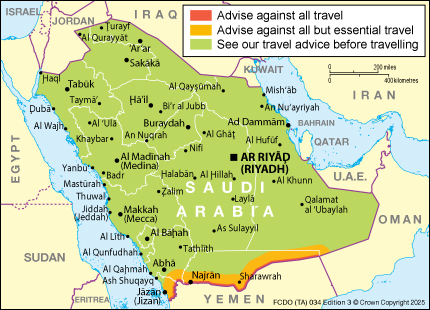Is it safe to travel to the Middle East? This is a question many travelers ask before planning a trip to the region. With its rich culture, history, and unique destinations, the Middle East attracts millions of visitors every year. However, recent events, conflicts, and changing political conditions have led governments to update their travel advisories. The UK Foreign, Commonwealth & Development Office (FCDO) regularly issues safety advice for countries around the world—including the Middle East.
This article provides the latest FCDO advice and helps you understand where it’s safe to travel, what precautions to take, and which areas you should avoid. If you’re planning a visit, keep reading to stay informed.
Why You Should Check FCDO Travel Advice Before Booking

The FCDO offers up-to-date information for British travelers, focusing on safety, terrorism risks, political unrest, health concerns, and natural disasters. Checking the FCDO website before booking flights or accommodation is essential.
Is it safe to travel to the Middle East? According to FCDO, the answer depends on your destination. Some countries are currently rated safe for travel, while others come with strict warnings or no-go advisories.
Countries That Are Generally Considered Safe
Several countries in the Middle East are considered safe for tourists when proper precautions are taken. These include:
- United Arab Emirates (UAE): Cities like Dubai and Abu Dhabi are popular and considered secure. FCDO rates the UAE as safe, though travelers should stay alert in public places.
- Qatar: With recent global events like the FIFA World Cup, Qatar has improved its safety infrastructure. FCDO lists it as a low-risk destination.
- Oman: Known for its peaceful environment and beautiful landscapes, Oman is listed with only basic safety advice.
- Jordan: Destinations like Petra and the Dead Sea attract many visitors. FCDO advises caution in areas close to Syria and Iraq.
In these countries, standard precautions apply—such as avoiding protests, respecting local laws, and staying informed.
High-Risk Destinations in the Middle East
Is it safe to travel to the Middle East? Not in every case. Some regions are marked as dangerous by the FCDO due to active conflict, terrorism threats, and political instability.
- Syria: The FCDO advises against all travel. Ongoing conflict and poor infrastructure make it one of the most dangerous places in the world for tourists.
- Yemen: Due to civil war and high terrorism risk, Yemen is entirely off-limits.
- Iraq: Most parts of Iraq are under “Do Not Travel” advisories. Exceptions like the Kurdistan region may have slightly less strict warnings, but they still pose significant risks.
- Lebanon: While Beirut was once considered a cosmopolitan hub, political tensions and violence have led to FCDO warnings. Travelers are advised to stay updated and avoid border areas.
- Iran: Ongoing unrest, government crackdowns, and arrests of foreign nationals make Iran a high-risk location. FCDO strongly advises against travel for tourists.
Latest Changes in FCDO Travel Advice (2025 Update)
The geopolitical landscape in the Middle East changes rapidly. According to the latest FCDO update:
- FCDO downgraded its warning for parts of Saudi Arabia, excluding border areas with Yemen. However, large public gatherings and religious sites still have high security.
- Israel and the Palestinian Territories have seen increased tensions. The FCDO advises against travel to Gaza and the West Bank. Recent clashes have heightened safety concerns.
- Turkey (eastern regions): While western Turkey is relatively safe, the southeast, near the Syrian border, remains volatile due to terrorism risks and military operations.
Precautionary Travel Tips for Visiting the Middle East
Even in countries considered safe, you should take the following precautions:
- Register with your embassy: It ensures your government can assist you in emergencies.
- Avoid political gatherings: Protests can turn violent quickly, even in tourist areas.
- Respect local customs: Dress modestly, avoid discussing religion or politics, and follow social norms.
- Use reputable transport: Rely on official taxis or hotel transfers.
- Have travel insurance: Ensure it covers medical emergencies, cancellations, and political unrest.
What If You Must Travel to High-Risk Zones?

In some cases, professionals, journalists, or aid workers must travel to risky areas. If you’re one of them:
- Get special permission from authorities.
- Undergo risk assessment and security training.
- Travel only with security escorts.
- Carry satellite communication devices.
FCDO does not offer consular support in most high-risk zones, so travelers are essentially on their own in emergencies.
Common Misconceptions About Travel Safety in the Middle East
Is it safe to travel to the Middle East? The answer is not always as extreme as people think. While media often highlights conflict zones, not every part of the Middle East is unsafe. Misconceptions can harm tourism and paint a one-sided image of the region.
Places like Dubai, Muscat, Doha, and Amman are known for luxury tourism and historical beauty. Many people safely enjoy holidays there every year.
Still, it’s vital to understand the region is diverse. Safety varies not just by country, but also by city and even neighborhood.
Final Thoughts: Is It Safe to Travel to the Middle East?
Is it safe to travel to the Middle East? The final answer: it depends. The Middle East is a vast and culturally rich region, offering many experiences. However, it is also home to ongoing conflicts and tensions that must be taken seriously.
The best thing travelers can do is stay informed, follow FCDO advice, avoid restricted areas, and always prioritize personal safety. Whether you’re visiting the shining skyscrapers of Dubai or the ruins of Petra, preparation is the key to a safe and enjoyable trip.
Also Read – 7 Inspiring Art Basel Picks by Co-founder of The Open Crate



